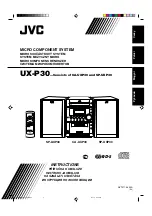
HUAWEI TE40&TE50&TE60 Videoconferencing
Endpoint
Administrator Guide
E Terminology
Issue 01 (2013-09-30)
Huawei Proprietary and Confidential
Copyright © Huawei Technologies Co., Ltd.
166
dual stream
During a conference, two channels of video streams can be sent or
received simultaneously. For example, one channel is used for
transmitting video (such as video captured by a camera) and the other
channel is used for transmitting presentation (such as a computer
desktop). The two channels of videos can be displayed on two
displays.
E
end conference
End a conference. In this case, all sites leave the conference.
F
full-duplex
A full-duplex, or sometimes double-duplex system, allows
communication in both directions, and, unlike half-duplex, allows
this to happen simultaneously. Land-line telephone networks are
full-duplex, since they allow both callers to speak and be heard at the
same time. A good analogy for a full-duplex system would be a
two-lane road with one lane for each direction.
G
G.711
G.711, also known as Pulse Code Modulation (PCM), is a very
commonly used waveform codec. G.711 uses a sampling rate of
8,000 samples per second, with the tolerance on that rate 50 parts per
million (ppm). Non-uniform quantization (logarithmic) with 8 bits is
used to represent each sample, resulting in a 64 kbit/s bit rate. There
are two slightly different versions; μ-law, which is used primarily in
North America, and A-law, which is in use in most other countries
outside North America.
G.722
G.722 is an ITU-T standard 7 kHz wideband speech codec operating
at 48, 56 and 64 kbit/s. It was approved by ITU-T in November 1988.
Technology of the codec is based on sub-band ADPCM
(SB-ADPCM).
G.728
G.728 is an ITU-T standard for speech coding operating at 16 kbit/s.
It is officially described as Coding of speech at 16 kbit/s using
low-delay code excited linear prediction.
give floor
After the chair site gives floor to a site, the other sites view and hear
the site. All the sites, except the chair site and the site that is given the
floor, are muted.
H
H.239
H.239 is an ITU-T recommendation from the H.32x Multimedia
Communications' macrofamily of standards for multimedia
communications over various networks. The H.239 recommendation
is titled "Role management and additional media channels for
H.3xx-series endpoints". Practical importance of this
recommendation is its setting forth a way to have multiple video
channels (for example, one for conferencing, another for







































